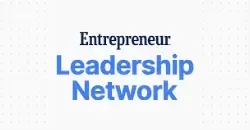This week, Knoxville NBC affiliate WBIR-TV (Twitter: @WBIR) launched a multi-part series detailing “The Big Quit” – an employee-transition phenomenon confronting employers in the United States and abroad.
We at Fletcher Marketing PR were honored to assist anchor Heather Waliga (Twitter: @WBIRHeather) with her reporting.
You can catch Heather’s segments online:
In this series, I along with Fletcher’s Director of Media Relations and Business Development Allison Lester (formerly assistant news director of WBIR) shared observations and insights about what’s driving this post-pandemic movement … and what employers can do in response.
Clearly, employee turnover represents a major disruption for employers.
Pre-pandemic, market research firm Gallup published a report in March 2019 that employee turnover is a “fixable problem” that “costs U.S. businesses $1 trillion.”
Wrote Gallup (and again… this report was pre-pandemic) …
- “The annual overall turnover rate in the U.S. in 2017 was 26.3%, based on the Bureau of Labor Statistics.
- “The cost of replacing an individual employee can range from one-half to two times the employee's annual salary -- and that's a conservative estimate.
- “So, a 100-person organization that provides an average salary of $50,000 could have turnover and replacement costs of approximately $660,000 to $2.6 million per year.”
In addition, Gallup noted that “Fifty-two percent of voluntarily exiting employees say their manager or organization could have done something to prevent them from leaving their job.”
Fast-forward to 2021, and the Society for Human Resource Management (SHRM) reported in March of 2021 that a “Turnover ‘Tsunami’ (is) Expected Once (the) Pandemic Ends.”
SHRM’s article cited research by the Achievers Workforce Institute that indicated, “The study also found that 46 percent of respondents feel less connected to their company, and 42 percent say company culture has diminished since the start of the pandemic. Just 21 percent said they are very engaged at work.”
As I mentioned in my interview with WBIR, a natural human response to massive change is for people to re-assess their situation and seek to take back control for themselves and for their own daily lives – having been thrust into a maelstrom of change and feeling a loss of control on so many fronts.
I’ve known many friends and colleagues who’ve changed jobs since March 2020, in seeking a far more purpose-driven alignment of their personal identity and goals with what they do for a living.
For example, in my interview with Travis Parman on Kelly Fletcher’s and my PR podcast, #MsInterPReted, in September, Travis spoke of his job change to Chief Communications Officer at sustainable-agriculture powerhouse AppHarvest as being driven in large part by his desire for better personal purpose alignment.
We at Fletcher recommend five steps employers can do to address this issue now:
- GET INTENTIONAL.
As a first step, CEOs and management teams must resolve that treating employee relations and internal communications as an after-thought is simply bad business practice.
Most companies tend to think of their customers as their No. 1 audience, but in truth, without dedicated and caring employees, customer acquisition and retention are pipe-dreams.
So employees really must rank first. - LISTEN.
Too many employers approach internal communications as a one-way street, with a top-down mentality toward information-flow.
Huge mistake!
Leaders must listen in a purposeful and – here’s that word again – intentional manner, in order to understand realistically what their employee teams are thinking and how they are perceiving their place of employment and their own place within it.
Focus groups and surveys conducted strategically go a long way toward collecting data and insights – but listening should be 24/7 endeavors… not just one-off, knee-jerk exercises. Immediate supervisors are the lynchpins. - LEARN, AND SHARE CREDIT.
Gathering insights from your employees means nothing if management teams don’t absorb those insights, synthesize / assimilate them into larger business strategies / practices, and then circle back and close the loop with employee teams to demonstrate how front-line employees’ input guided better practices and pathways.
Sharing credit and saying “thank you” to front-line teams vastly enhance employees’ sense of engagement and vested-ness. - DEMONSTRATE CARE.
People want to be seen, heard and respected . . . it’s a fundamental human need, and it’s no different in the workplace setting than from any other human relationship.
There are practically a million little ways that “care” can be demonstrated to employees credibly and effectively. Conversely, there are an equal number of ways that employees can experience and perceive lack-of-care, neglect and full-on offense.
While no employee will be or can be kept 100% happy 100% of the time, demonstrating care and good faith goes a massive way toward fostering trust. Reasonable people can sometimes disagree, but it’s the trust factor that binds people in positive relationship, even when they must agree to disagree. - CREATE CIRCLES OF CONTINUOUS INTERACTION.
Rethinking a company’s employee communications platform for better team recruitment / retention requires systems of interaction and multi-way communications… not just a few new tactics like an employee newsletter or new annual recognition program.
Ideally, strong employee communications should be underpinned with a strategic plan, and just like core ethics, should be a constant factor of everyday workplace culture.
For more information on ways our team can help your organization craft effective employee communications strategies for measurable business impact as well as turnover-expense mitigation, contact Kelly Fletcher at Fletcher Marketing PR, kfletcher@fletchermarketingpr.com.
With more than 25 years of public relations management experience, Mary Beth West, MPRCA, serves as senior strategist at Fletcher Marketing PR. She can be followed on Twitter, @marybethwest, and contacted via e-mail, at mbwest@fletchermarketingpr.com.

